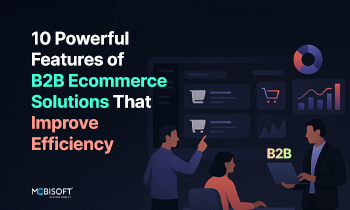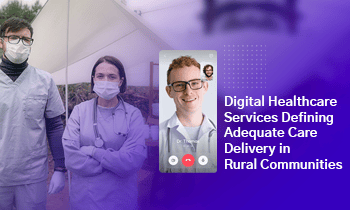With the onset of the pandemic, people have got accustomed to ordering things online and getting them home-delivered. This trend has put intense pressure on the logistics industry; especially the last-mile delivery services.This last-mile delivery, the final stage of transportation, is considered the most critical phase. It is that stage in the supply chain, in which the package is taken from the warehouse to the customer.
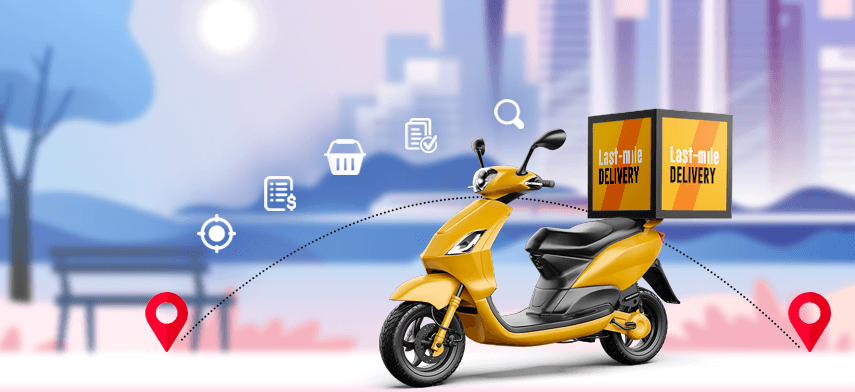
Tech advancements like routing optimization algorithms and real-time tracking have been a lifesaver for this phase. Further testing of technologies is in process, to ease the challenges of last-mile delivery for e-commerce businesses.
Here in this article, we will explore the last-mile delivery challenges and how developments in technology are helpful.
Let’s dive in.
Last-mile Delivery Workflows: Challenges Faced by Businesses & How They Cope
The last-mile delivery involves multiple drop-offs, that too sometimes with only one or two packages. So, as a logistic business, you must take care of different affairs. However, all deliveries might not be flawless.
Some major challenges faced during last-mile delivery are:
Real-time tracking
Tracking codes allow transparency in the process until the hub. But real-time tracking after that isn’t available in many places. So, once the package is out for delivery, businesses, as well as customers, are anxious. The lack of real-time tracking leads to ambiguity regarding the estimated time of delivery (ETD).
Businesses, though, are leveraging GPS to ensure transparency in last-mile delivery. Using GPS, the software on the smartphone of the delivery agent tracks the location and predicts the ETD.
Efficient routing
In urban areas, the maze of narrow lanes and heavy traffic causes significant delays in individual deliveries. Thus, in the absence of proper route planning, the process becomes time-consuming. Also, proper collating of orders is required for deliveries to the far-flung rural areas.
Businesses have started using route optimization algorithm software to solve the problem. These identify the fast and most cost-effective routes for the deliveries. Some software also supports dynamic rerouting.
Proper communication
Another problem in the last-mile delivery business is the absence of on-time communication. Sometimes customers aren’t available at the time of delivery. They are even unreachable through calls. Such hindrances cause difficulties in the delivery schedule. Also, some orders are delivered in the wrong hand or go missing.
In such cases, a 24/7 helpline and chatbots help businesses know the preferred delivery time of customers. Tracking, digital signatures, and ePOD (Electronic Proof of Delivery) also sort out the lost packages.
Trained drivers
The logistics industry has a shortage of reliable bikers/drivers. Most delivery agents are independent part-time employees, who lack efficient and practical knowledge of the process. And this “freelance” hiring model leads to lots of idle time, inconsistent delivery plans, and late deliveries.
But many businesses have been providing incentives to the drivers to maintain a good relationship. These incentives, for fuel-efficient driving, or fast and accurate deliveries, or others, motivate them to work better.
Right vehicles
To ensure timely delivery, a fleet of vehicles needs to be available as and when needed. The right vehicle should be present for all kinds of deliveries. During a surge in e-commerce orders, you might also need to rent vehicles. And all these factors increase the cost of running a last-mile delivery business.
Logistic companies, therefore, use software to allocate vehicles that fit the delivery needs. They also take road restrictions and other geographic factors into consideration.
Logistics Technology Impacting Warehousing and Order Fulfillment
The use of technology is indispensable in today’s supply chain. Mobile ePOD solutions, barcode scanners, and warehouse management systems have streamlined inventory storage and order fulfillment.
Also, with the advancement in various automation technologies, different last-mile logistics solutions have been deployed or being tested. Coronavirus and global lockdowns have sped up the development of contactless technologies.
And some technologies which might be mainstream in the not-so-far future are:
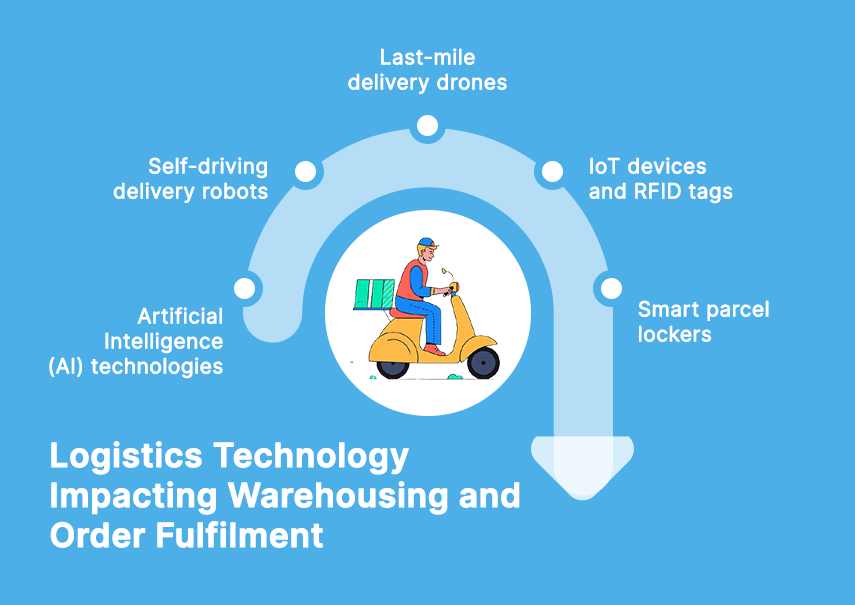
Artificial Intelligence (AI) technologies
AI, Data Science, and Machine Learning solutions work in sync to learn the processes of the business. These record the alerts and actions. Then, based on preferred delivery times, potential shipping delays, and other metrics, software help optimize on-demand delivery.
You can seek software’s assistance with a variety of decisions. And with help from powerful cloud computing solutions, AI suggests steps to execute in real-time. The executed decisions are further used to streamline the last-mile logistics.
Self-driving delivery robots
Self-driving robots have already been working in various campuses and industrial areas. These autonomous vehicles and delivery robots can significantly improve delivery times while freeing human labor for other tasks. The cargo hold can be locked, to be unlocked only by PIN or the customer’s smartphone. Also, this last-mile delivery process can be tracked.
The robots are equipped with sensors and cameras for fast and reliable delivery. And as deep learning algorithms develop, these robots can also deliver 24 hours a day with little human intervention.
Last-mile delivery drones
Unmanned Aerial Vehicles (UAVs) or drones can take packages from warehouses or delivery hubs for localized deliveries. With cameras, GPS, and other sensors, these can deliver goods in a short time.
Store-to-customer shipments are being tested. And a combination of drone and van delivery systems might be a regular scene too. The van (with autonomous drones) is parked near the delivery location, while an automated cargo hold loads the drones with packages and respective location data.
IoT devices and RFID tags
IoT sensors monitor all kinds of vehicle data in real-time. These include fuel consumption, speed, and temperature, among others, to provide insights on delivery patterns. Also, IoT devices, along with RFID tags and barcodes, can help in tracking parcels during their journey.
By using Bluetooth, NFC, and other connectivity technologies, the last-mile delivery phase can be automated to an extent. IoT-enabled secured mailboxes can also provide protection and tracking for e-commerce parcels and other packages.
Smart parcel lockers
Smart parcel lockers are secure storage solutions where an agent can deliver orders. The customers get the notification, and they can pick them up whenever it’s convenient. These lockers use on-demand delivery apps, cloud-based software, and cameras for verification.
Such lockers can reduce the number of delivery attempts, and thus, the costs of last-mile operations. Having a group of parcel lockers in a building will even minimize door-to-door trips for delivery agents.
Benefits of Last-mile Logistics Technology
With software providing real-time tracking and dynamic routing, last-mile delivery has become faster, more efficient, and more transparent. The use of software has eased up storage management too. The adaptation of delivery drones, self-driving robots, and other logistics technology also has many inherent benefits.
Below are some key benefits provided by such last-mile technologies:
1 Improves transparency
Advanced last-mile delivery software and technology allow the participants to know where the order is. With appropriate tracking devices, the packages have real-time visibility. You know exactly where the order is and when it will be delivered. Softwares not only minimize thefts or packages being lost but also predict future delivery timelines better.
2 Enhances order management
Delivery software can automate repetitive tasks such as manual verification and data loading at each stage. The use of technology eliminates various issues by using automated order updates, allocation of available resources, and predictive insights. Then, with barcodes and RFID tags, order tracking becomes easier and so does delivery planning. You and your customers get alerts regarding any potential delays.
3 Optimizes delivery speed
Logistics software, with integrated cloud services and GPS, can help you plan apt delivery schedules. They also suggest efficient routes based on real-time data to avoid unnecessary delays. Such a system updates delivery agents about traffic jams or bad weather. And they provide suggestions regarding the best alternative route to ensure on-time deliveries.
4 Reduces delivery attempts
Flexible delivery options and instant changes are other benefits last-mile software provides. Customers can update delivery address or time in case they might not be available to receive their order. Software solutions also allow customers to add delivery instructions if they want the package handed over to someone else.
5 Boosts productivity
By eliminating chances of diversions, wait times, and unnecessary delivery attempts, last-mile delivery tech improves the productivity of the team. You can allocate more drivers and vehicles to certain routes during peak business hours. And you can also reduce the number of deliveries by planning routes as per the location of different orders.
6 Increases profits
All the benefits like fleet productivity, well-planned routes, and reduced delivery attempts can provide a significant boost to profits. Software usage also helps reduce fuel consumption, minimize fleet expenses, and scale your business. All these factors have a compound effect and increase the profitability of your company.
7 Delights customers
With transparent shipping info, on-time updates, and flexible delivery options, logistics software brings a positive impact on customers’ trust. The software also enables them to chat with delivery agents and get the last-mile delivery updates. By providing multiple payment options, they even enable contactless payments upon delivery. Customers can review their delivery experience too; to help you improve your services.

Final Thoughts,
Last-mile delivery is critical for e-commerce companies to improve customer satisfaction and retention. So, only the most efficient logistics business will stand the load of work and the test of time.
And that’s where last-mile logistics technology can help. From warehouse management to data-backed predictions, robust delivery management software can handle many last-mile delivery challenges. These solutions can also minimize real-time disruptions.
Last-mile technologies can help with real-time tracking, facilitate on-demand delivery and cut costs while improving your services.
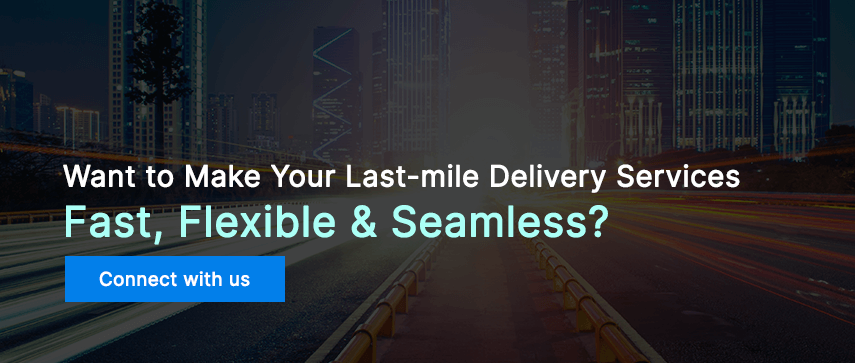
Author's Bio

Nitin Lahoti is the Co-Founder and Director at Mobisoft Infotech. He has 15 years of experience in Design, Business Development and Startups. His expertise is in Product Ideation, UX/UI design, Startup consulting and mentoring. He prefers business readings and loves traveling.
